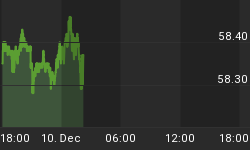
On Friday, January 7, 2011, the first BLS Employment Situation Report in 2011 will be released. Historically, when the S&P 500 was up at least 1.0% week-to-date from Monday to Thursday (day by day) prior to the Employment Report release, but closed lower on the session immediately preceding the Employment Report release (like on Thursday, January 6), the S&P 500 shows a notably edge on the long side of the market on the release date and the then following session as well (in this event on Friday, January 7, and Monday, January 10, 2011).
Table I below shows all occurrences (since 1957) and the S&P 500's performance over the course of the then following 1 , 2 and 3 sessions, assumed one went long of the immediately preceding the Employment Report release date (in this event on January 6, 2011) when the S&P 500 was up at least 1.0% week-to-date from Monday to Thursday (every single day) prior to the Employment Report release, but closed lower on the session immediately preceding the Employment Report release.

(* no close below trigger day's close during period under review)
When the S&P 500 was up at least 1.0% week-to-date from Monday to Thursday (every single day) prior to the Employment Report release, but closed lower on the session immediately preceding the Employment Report release in the past, ...
- ... the S&P 500 closed higher on the Employment Report release day and the then following session on 25 out of 34 occurrences (or 70.59% of the time) ; thereof up two days later on 10 out of the last 11 occurrences ;
- ... downside (in contrast to upside) potential was regularly limited over the course of the then following three sessions ; the S&P 500 closed higher at least +1.0% one, two and three sessions later on up to 8 occurrences, but lower at least -1.0% on only 3 occurrences (max. loss -1.52% three sessions later), and
- ... the S&P 500 never looked back and did not post a single close below the trigger day's close over the course of the then following three sessions on 18 out of those 34 occurrences.
Chances are even better with respect to those occurrences when the S&P 500 was up at least 1.0% week-to-date from Monday to Thursday (every single day) prior to January's Employment Report release, see Table II below.

(* no close below trigger day's close during period under review)
The S&P 500 closed higher on the Employment Report release day on 8 out of 9 occurrences, and closed at a higher level two and three days later on 7 out of those 9 occurrences.
Conclusions:
When the S&P 500 was trading on a firm note (up >= +1.0% week-to-date from Monday to Thursday, every single day) the trailing week prior to an Employment Report release date in the past, chances are good that the market will not disappoint the bulls on the release data and the then following session as well.
Successful trading,
















